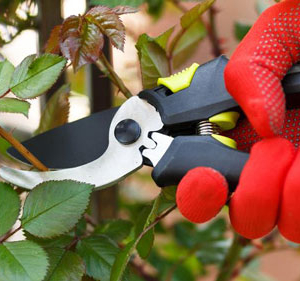Winter pruning
As the days are now cooling and with winter having commenced, I thought it was time to remind gardeners that the time is now right to look at the pruning of winter-dormant roses, trees, shrubs and fruit trees. Pruning of these plants needs to be done to form new wood for future flowering and fruiting.
If your garden is a bit closer to the coast pruning can be put off until July when the plants will be even more dormant. It is important to remember that pruning too early, while the sap is still flowing, can cause the plant to stress with ‘bleeding’ and allows disease to enter these wounds. Also pruning roses too early will encourage them to shoot early with these shoots being possibly burnt off with a heavy frost.
Roses should be pruned reasonably hard as this will encourage more new growth that in turn will encourage more flowering wood and then, of course, more blooms will appear in late spring. If you are unsure of the severity of pruning, then these few tips will help:
1. Initially remove all dead or damaged wood.
2. Remove any branches that are crossing over another branch or are growing into the centre of the bush. The idea is to keep the centre of the bush open in a vase shape to allow for better air circulation and increased sun penetration. These will decrease the likelihood of fungal diseases when the plants come into leaf again in spring.
3. Reduce all remaining growth by as much as half, remembering to ensure that you have live buds below the cut and the upper-most bud is pointing away from the centre of the plant – basically pointing in the direction that you want the new growth to grow.
An important fact to remember when attending to your roses is not to prune those that have only one flowering period in summer. These roses flower on the current season’s growth and if pruned in winter there will be no flowers. Pruning of these roses takes place in late summer after they have flowered. Generally, these are mainly climbing roses.
The pruning of deciduous fruit trees is a bit more complicated and if you are unsure of the technique, I suggest you contact a professional horticulturist for some help. Fruit trees develop fruit buds on different types of wood, so it is important to know these so you don’t remove established fruiting spurs, particularly on apples and pears.
Once all the roses and trees have been pruned, complete a spray of winter insecticide and fungicide to remove any over-wintering insect pests and fungal problems.
Pruning of hydrangeas should also take place now and it is recommended to use a similar method to the one you use on your roses. Hydrangeas flower on growth that has been made in spring on new season’s wood so the more that this is encouraged the more flowers you will have.
Now is also a good time to divide and relocate summer-flowering bulbs and tubers like dahlias and other herbaceous perennials. Divide them with a sharpened spade and dust with a fungicide to prevent any damage to the cut. Plant them in their new positions with a combination of cow manure and a handful of blood and bone added to the existing soil. Remember that most herbaceous perennials like a well-drained soil, so slightly raised garden beds in full sun are the ideal.
Still on the theme of pruning it should be well remembered that not all flowering trees or shrubs in the garden need to be pruned in winter. I have seen many spring-flowering plants heavily pruned in winter and then no blossom appears in spring. Spring-flowering trees and shrubs develop their flowering buds in late summer and autumn and if these plants require pruning, do it in late spring after flowering. They then have the rest of the year to develop new flowering wood.
Ensure all your pruning tools are well sharpened and clean. Cleaning the cutting tools between plants with a diluted antiseptic, will decrease the spread of infection from one plant to another.



